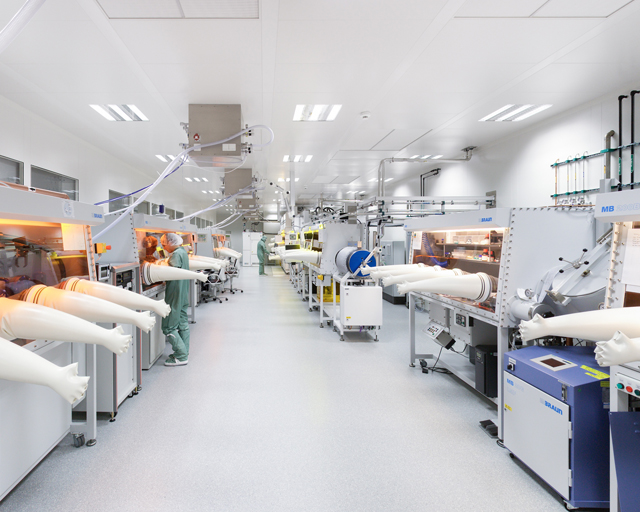LOPEC 2016: Printed electronics – from idea to series production
The Fraunhofer Institute for Applied Polymer Research IAP in Potsdam-Golm will present an industrial-scale pilot plant, which develops printed electronics according to customer specifications, at the LOPEC Exhibition for the Printed Electronics Industry in Munich from April 6 to 7, 2016. Ink-jet printing is used to produce organic solar cells or OLEDs on glass or film. Even inexpensive perovskite solar cells that currently measure only a few square millimeters can be scaled up to an industry-relevant scale. For the first time in Germany all of the organic and inorganic layers can be printed using just one facility - saving time and money.

Luminescent films, paper-thin displays, flexible solar cells – far beyond the realm of traditional electronics, inks that are conductive and printable make many new applications possible. The first step in developing a product usually occurs in a lab that often resembles a manufactory. However, in order to successfully launch a product on the market, its materials and manufacturing processes have to be suitable for industrial use.
Transferring to an industry-relevant scale
"The pilot plant allows us to offer companies the chance to transform ideas into commercial products," explains Dr. Armin Wedel, Head of the Functional Polymer Systems Research Department at the Fraunhofer IAP. The production facility develops organic light emitting diodes (OLEDs) as well as solar cells and sensors. These are then scaled up to an industry-relevant scale. Special know-how includes the development of printable materials that can be printed in extremely thin, uniform layers. At the same time, producing these components on a large scale without compromising on performance, e.g. durability or efficiency, poses a major challenge.
Upscaling inexpensive solar cells made from perovskite
The pilot plant in Potsdam is able to print more than just organic materials. "We are currently applying our many years of experience in organic electronics to perovskite solar cells, an innovation which the solar branch is pinning its hopes on," says Wedel. Using perovskite materials in solar cells has been a recent discovery. These are much more affordable than the silicon solar cells that were previously used. Perovskite poses a breakthrough in the production of inexpensive, green electricity made from sunlight. Until now these solar cells have only been a few square millimeters in size. At the Fraunhofer IAP they are being scaled up to measure 15 cm by 15 cm as part of CHEOPS, a recently launched EU project. This is no small feat since the electricity created at every point of the solar cell has to be conducted to the edge of the panel via electrodes. Such a large area can lead to high losses in electricity. In order to counteract inefficiencies, researchers print specially developed lattice structures before printing the electricity-producing layer. In addition to their small areas, perovskite solar cells have another drawback: they have a short shelf life. "We intend to increase their lifespan using encapsulation processes. In this respect we are also able to profit from our extensive expertise in OLED technology," explains Wedel.
Material and technology development: organic solar cells, OLEDs and quantum dots
At the LOPEC in Hall B0 | Stand 100, Fraunhofer researchers will present the pilot plant alongside their latest material and technology developments in the printed electronics produced by the pilot plant: environmentally friendly, organic, flexible, printed solar cells with an efficiency above 3 percent, water-soluble and cadmium-free quantum dots, and OLEDs for the display industry.
Last modified: